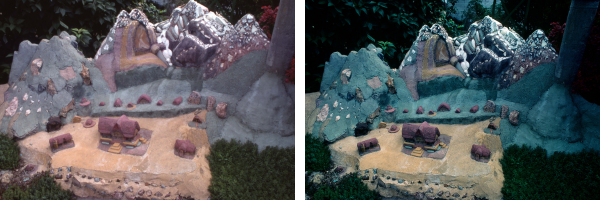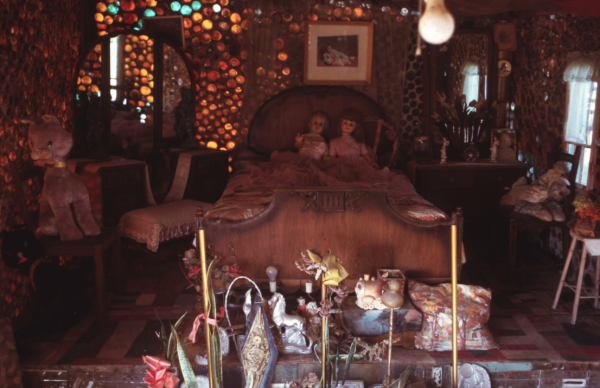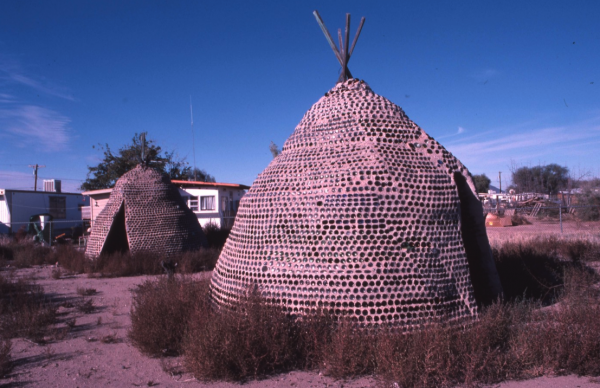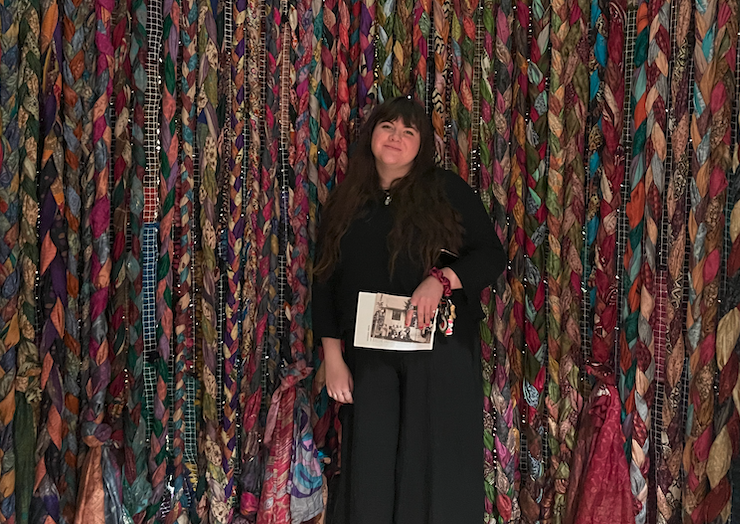I started my internship at SPACES at the beginning of June, and the past five months have been some of the most rewarding of my life. I have spent this time digitizing SPACES’ large collection of slides by Seymour Rosen that documented art environments, researching these environments, and updating the information presented on the SPACES website. With these new scans, we were able to get clearer images from Seymour’s slides.

Florence Deeble's Rock Garden, Seymour Rosen 1977
Here is an example from a page in progress: on the right we can see the older scan of Florence Deeble’s Rock Garden, and on the left we can see the new, clearer scan. This ongoing project with Seymour’s slides not only will allow access to images that were previously not digitally available but also all the images are more accurate to Seymour’s originals. It has been so rewarding to spend so much time with Seymour’s work and to see these environments through his lens. It is hard to pick favorites from a pool of work that is so vast and also so full of amazing environments, but I will attempt to share a few standouts from my time:

Grandma Prisbrey's Bottle Village in Simi Valley, CA. Seymour Rosen, 1972.
Tressa Prisbrey’s Bottle Village was probably the environment I was most familiar with coming into this internship, and I was so excited when I got to it in Seymour’s collection. This image from 1972 in particular is one of my favorites. I think it has so much energy and so perfectly captures the Bottle Village. The framing of this image with the two dolls in bed at the center is so striking to me. Over the course of this project I have seen how deftly Seymour is able to capture the essence of environments and the spirit of the artists’ visions.

Della Wilcox's God's Little Acre, Seymour Rosen, 1989.
The first environment page I created from scratch was Della Wilcox’s God’s Little Acre in Tucson, Arizona. Della Wilcox spent three decades bringing to life her vision. She spent a year building her first glass bottle structure (seen above) and then immediately began working on the second. She filled her Acre with oddities she collected from the dump that ranged from wagon wheels to taxidermied animals to a picture of Richard Nixon. The status of God’s Little Acre is still unconfirmed, but from some very thorough Google Earth stalking it looks like it is no longer extant. I feel so lucky to have seen all the images Seymour took and to experience God’s Little Acre the way he saw it 1989. I am so glad that Della’s 30 years of work and artistic vision are now documented on the website and other people can experience it too.
This story encapsulates why Seymour’s work is so important; he dedicated his time to documenting and trying to save environments like these.
Though there are many of us who care about these environments, they are often lost to posterity. Without Seymour’s documentation that could have very well been the case for God’s Little Acre. In my research I could find no online record of it. It is sad to think of how many cases there are where an artist's life work is lost with no record. I feel so grateful to have, in some small way, helped in Seymour’s work. His legacy is so great, and I am so excited to see what further treasures are in his slide collection as this project continues with the next intern.
While searching through the SPACES Archive for a record of Della Wilcox, I found a clipping from a City Magazine article from 1987 about the making of God’s Little Acre and what would happen to it after Della’s passing. At the end of the article, there was a quote that I think about often. I feel it perfectly captures why art environments and other vernacular art practices are so important and why I was so grateful to spend time among them and entrenched in Seymour’s images. So I will leave you with that quote, “Folk art and folk artists are too often brief flickerings of talent and beauty that the booming city devours."


Post your comment
Comments
No one has commented on this page yet.